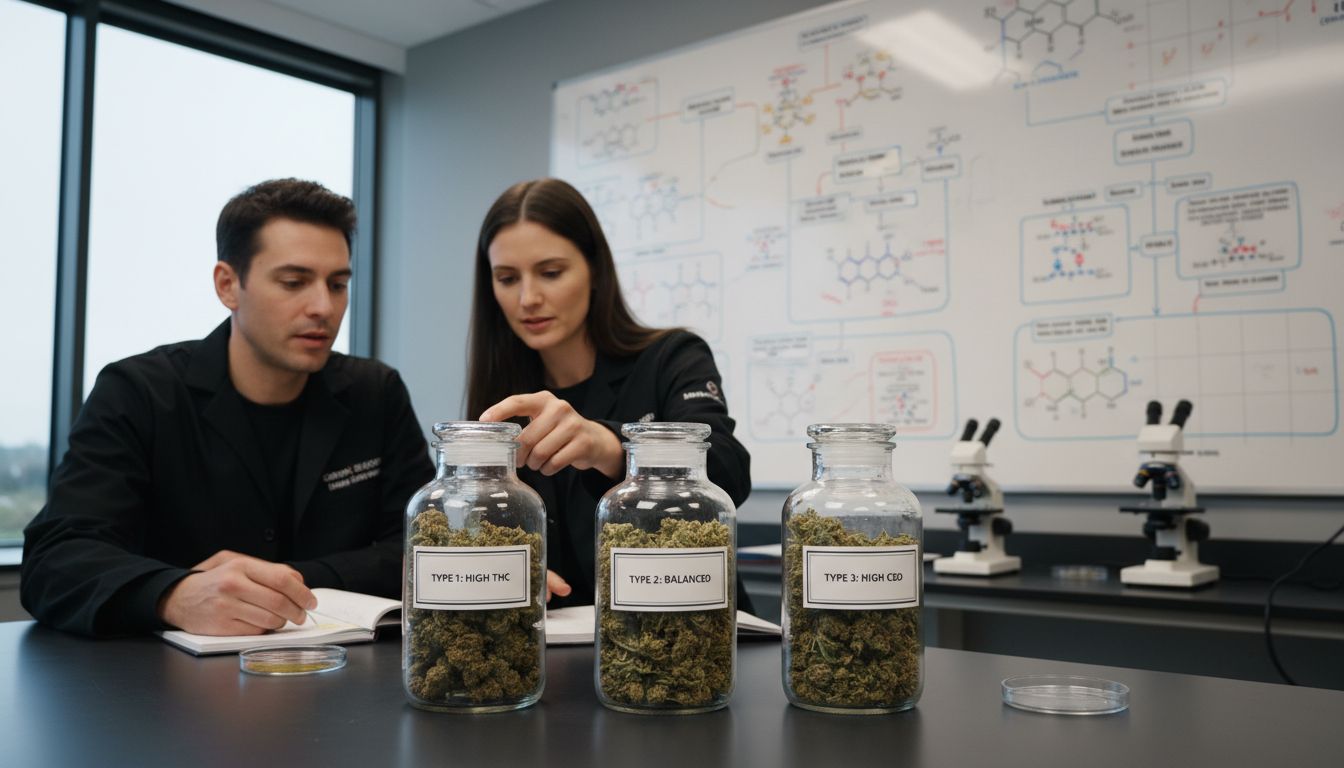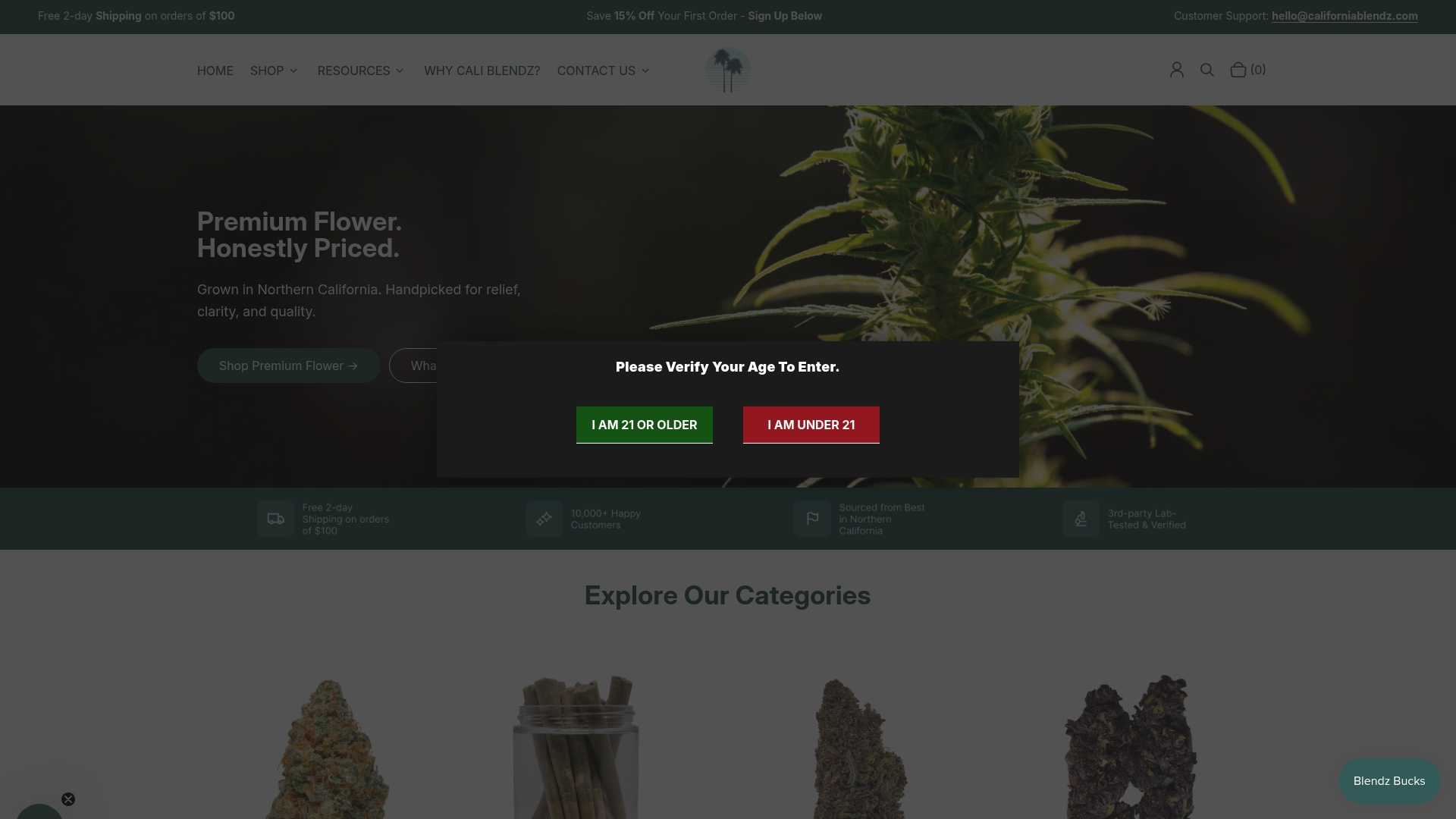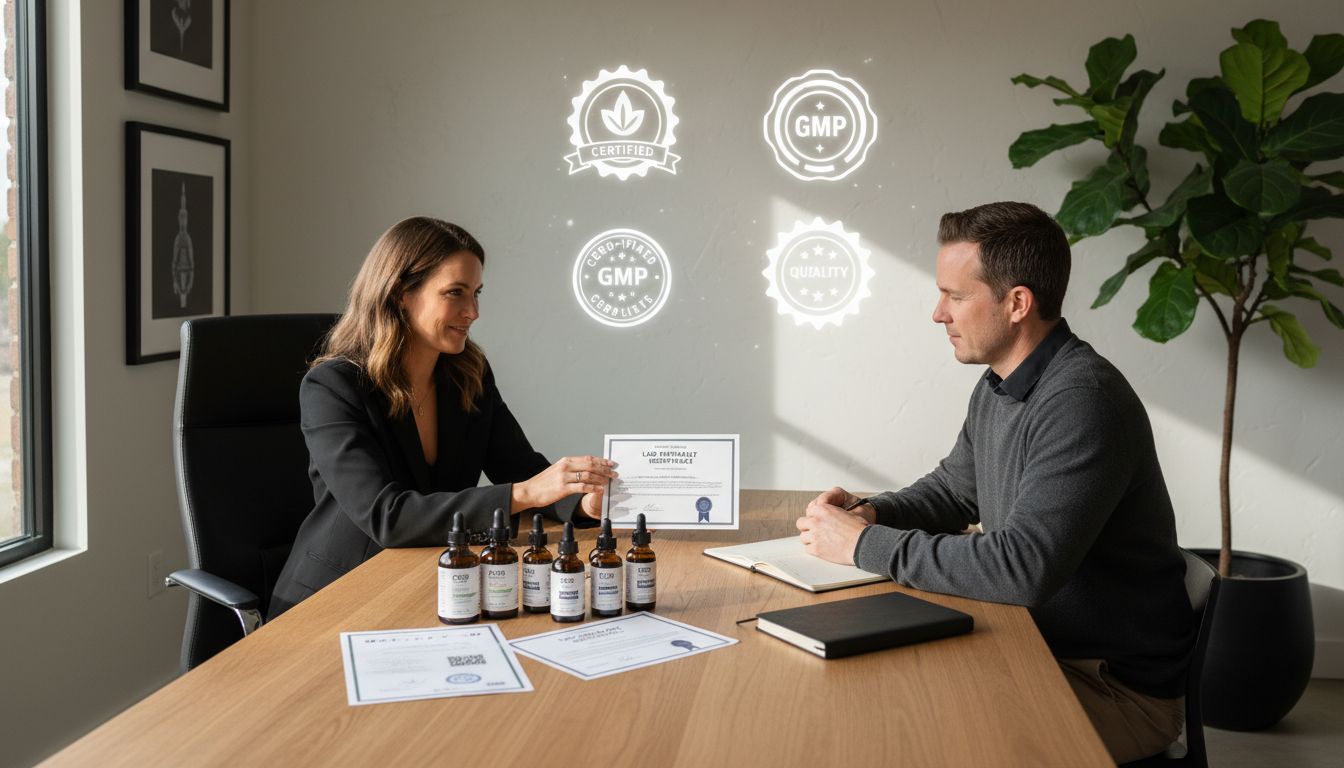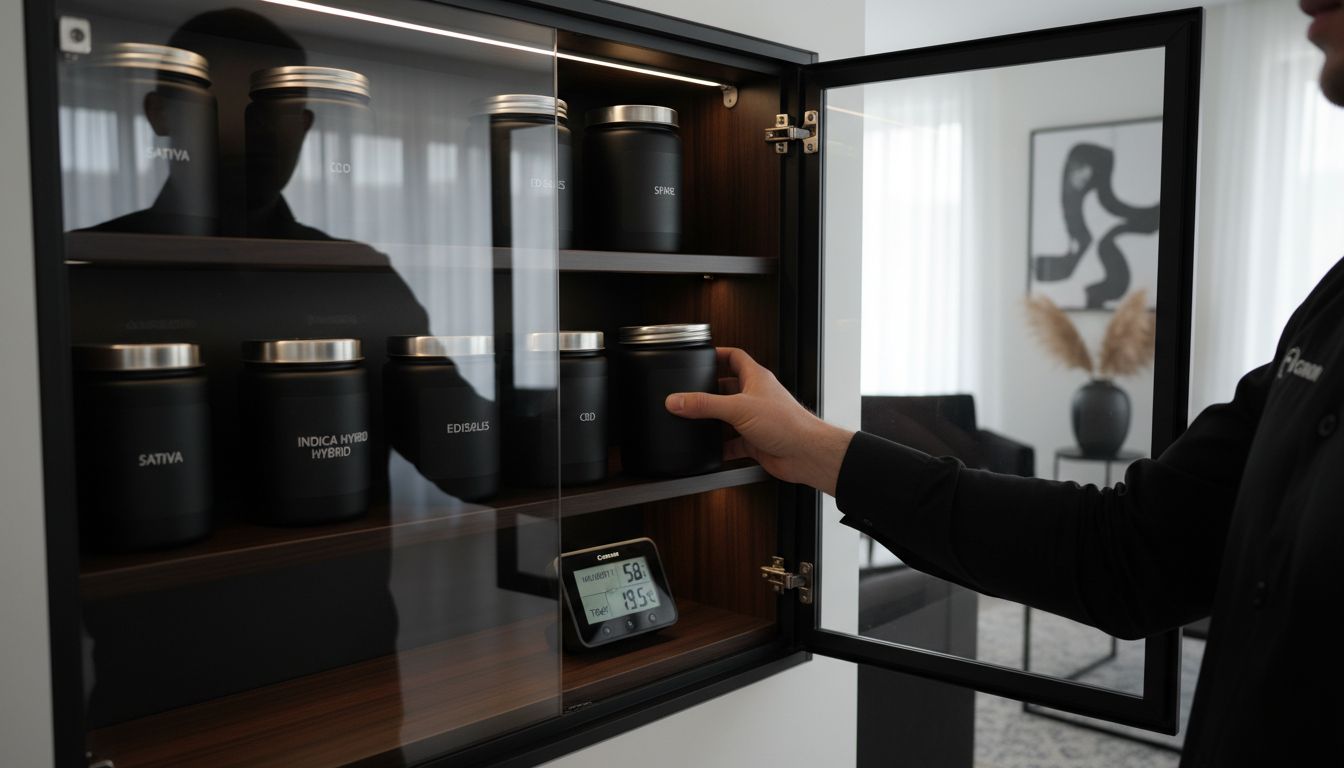CBD Flower Benefits: Everything You Need to Know
Written by Trevor

Over 50 million Americans have tried CBD in some form, yet confusion around CBD flower remains common. Many people still believe it can cause a high or mistake it for marijuana. Understanding what sets CBD flower apart matters for anyone exploring hemp wellness. This article clears up key misconceptions and explains why CBD flower is gaining attention among those seeking therapeutic benefits without the buzz.
Table of Contents
- CBD Flower Explained: Definition And Key Misconceptions
- Types Of CBD Flower And Cannabinoid Profiles
- How CBD Flower Delivers Its Benefits
- Legal Status And Safety Considerations For CBD Flower
- Comparing CBD Flower With Other CBD Products
Key Takeaways
| Point | Details |
|---|---|
| Understanding CBD Flower | CBD flower is derived from hemp with high CBD and low THC, specifically bred for therapeutic uses without psychoactive effects. |
| Types and Their Uses | CBD flower is classified into three types based on THC and CBD ratios, enabling users to select varieties that align with their wellness goals. |
| Benefits of CBD Flower | CBD flower interacts with the body’s endocannabinoid system, potentially aiding in various health conditions without significant psychoactive effects. |
| Legal and Safety Considerations | The legality of CBD flower varies by jurisdiction, requiring consumers to choose third-party tested products and consult healthcare professionals for safe use. |
CBD Flower Explained: Definition and Key Misconceptions
CBD flower represents the raw, minimally processed hemp plant buds containing high concentrations of cannabidiol (CBD) and minimal levels of tetrahydrocannabinol (THC). According to ifst.org, cannabis plants are strategically categorized into two primary varieties: hemp (low THC) and marijuana (high THC), with hemp varieties specifically cultivated to deliver higher CBD levels and negligible psychoactive potential.
Understanding the botanical distinctions is crucial. Hemp-derived CBD flower emerges from Cannabis sativa subspecies that are intentionally bred for their therapeutic cannabinoid profile. As documented by cdn.who.int, the Cannabis sativa subspecies sativa is typically cultivated for fiber and oilseed production, characterized by low Δ9-THC and high CBD content, rendering it fundamentally non-intoxicating.
Common misconceptions about CBD flower often stem from confusion with marijuana. Unlike THC-rich cannabis varieties, CBD flower will not produce psychoactive effects or the traditional “high” associated with recreational cannabis consumption. The key differentiator lies in its cannabinoid composition - with CBD flower containing less than 0.3% THC, ensuring users can experience potential wellness benefits without cognitive impairment.
For those new to CBD flower, understanding its origins and characteristics is paramount. Debunking 5 Common Myths About CBD Flower: Separating Fact from Fiction provides an excellent resource for individuals seeking comprehensive insights into this fascinating botanical product.
Types of CBD Flower and Cannabinoid Profiles
Cannabis plants exhibit remarkable diversity in their cannabinoid compositions, with distinct types classified primarily by their THC and CBD ratios. According to pubmed.ncbi.nlm.nih.gov, comprehensive research has revealed three primary cannabinoid chemotypes: CBD-rich varieties containing 1.6% to 16.7% CBD, THC-rich varieties with minimal CBD levels, and balanced THC:CBD varieties featuring more evenly distributed cannabinoid profiles.
Cannabis Classification is further nuanced by its therapeutic potential and chemical makeup. ictp.uw.edu categorizes cannabis into three distinct types: Type 1 (high THC, low CBD) typically preferred for recreational use, Type 2 (balanced THC and CBD) offering moderate effects, and Type 3 (low THC, high CBD) primarily sought for potential medical applications and wellness support.
Here’s a comparison of the main types of CBD flower and their cannabinoid profiles:
| Type of CBD Flower | THC Content | CBD Content | Typical Use |
|---|---|---|---|
| Type 1 (High THC, Low CBD) | High (>0.3%) | Low | Recreational, psychoactive |
| Type 2 (Balanced THC:CBD) | Moderate | Moderate | Mixed effects, therapeutic |
| Type 3 (Low THC, High CBD) | Low (<0.3%) | High (1.6%-16.7%) | Medical, wellness, non-intoxicating |
Understanding these variations is crucial for consumers seeking specific effects. Different CBD flower varieties offer unique experiences based on their cannabinoid and terpene profiles. While some individuals seek minimal psychoactive potential, others might prefer more balanced chemotypes that provide nuanced therapeutic benefits. The Different Types of Terpenes Found in CBD Flower: Aromas + Effects provides deeper insights into how these complex botanical compositions influence user experience.
For newcomers and experienced users alike, recognizing the intricate differences between CBD flower types empowers more informed, personalized wellness choices. Each cannabinoid profile offers a unique interaction with the body’s endocannabinoid system, making exploration and understanding key to finding your ideal botanical companion.

How CBD Flower Delivers Its Benefits
CBD flower interacts with the human body through the endocannabinoid system, a complex network of receptors that regulates various physiological processes. According to cdn.who.int, CBD has been utilized in therapies addressing diverse health conditions, including chronic pain, respiratory diseases, certain cancers, and cardiometabolic risks, demonstrating its potential wide-ranging therapeutic applications.
The biochemical mechanism of CBD flower involves its interaction with CB1 and CB2 receptors throughout the body, which helps modulate inflammation, pain perception, and neurological responses. pubmed.ncbi.nlm.nih.gov highlights particularly promising research showing CBD-rich cannabis varieties with 1.6% to 16.7% CBD content have been effectively used in treating epileptic patients, suggesting significant potential for neurological symptom management.
CBD flower’s benefits manifest through its unique ability to provide therapeutic effects without significant psychoactive impacts. The non-intoxicating nature of CBD allows users to experience potential wellness benefits while maintaining mental clarity. Users often report improvements in stress management, sleep quality, and overall relaxation. What does CBD flower do? provides additional insights into the nuanced ways CBD interacts with individual physiological systems.
Understanding individual biochemistry is crucial when exploring CBD flower benefits. While research continues to unveil its potential, personal experiences can vary widely. Consulting healthcare professionals and starting with lower doses allows individuals to safely explore how CBD flower might support their unique wellness journey.
Legal Status and Safety Considerations for CBD Flower
The legal landscape for CBD flower is complex and continually evolving, with significant variations across different jurisdictions. According to ifst.org, federal regulations in the United States permit hemp cultivation when THC levels remain below 0.3% w/w, creating a critical threshold for legal hemp-derived products. This precise definition determines whether a cannabis product is considered legal hemp or a controlled substance.
Historically, legal challenges have played a pivotal role in establishing CBD flower’s regulatory framework. The landmark Hemp Industries Association v. DEA case in 2004 affirmed the legal trade of hemp-derived products, protecting parts of the hemp plant exempted from federal regulation. This judicial decision established crucial precedents for distinguishing between industrial hemp and controlled cannabis varieties.
Safety considerations extend beyond legal status, encompassing product quality, potential interactions, and individual health profiles. Consumers should prioritize third-party lab-tested products, understand potential medication interactions, and consult healthcare professionals before incorporating CBD flower into their wellness routine. Understanding Hemp Flower Legality: A Comprehensive Guide offers additional insights into navigating these complex regulatory environments.
While CBD flower presents promising wellness potential, responsible consumption requires informed decision-making. Individual biochemistry, existing health conditions, and current medications can significantly impact how one responds to CBD. Starting with low doses, purchasing from reputable sources, and maintaining open communication with healthcare providers remain essential strategies for safe, legal CBD flower exploration.
Comparing CBD Flower With Other CBD Products
CBD consumption methods vary widely, with each product offering unique advantages and experiences. According to publications.sciences.ucf.edu, medical cannabis users demonstrate diverse consumption preferences, with 51.9% reporting flower product usage and 85.2% utilizing oral preparations, highlighting the range of available options for CBD intake.
Bioavailability and absorption distinguish CBD flower from alternative products like oils, edibles, and capsules. Inhaling CBD flower provides faster onset and potentially higher absorption rates compared to oral consumption methods. pubmed.ncbi.nlm.nih.gov confirms that CBD-rich cannabis flowers containing 1.6% to 16.7% CBD can deliver therapeutic benefits similar to other CBD products, with the added advantage of more immediate effects.
Each CBD product type offers distinct characteristics. Oils provide precise dosing and discretion, capsules offer convenience, edibles deliver longer-lasting effects, while CBD flower provides a more traditional, holistic cannabis experience. Budget-Friendly Hemp Flower vs Top Shelf CBD Flower: Which Option is Right for You can help consumers navigate these nuanced choices based on individual preferences and wellness goals.
Ultimately, selecting the right CBD product depends on personal needs, lifestyle, and desired outcomes. Factors like onset speed, duration of effects, convenience, and individual physiological responses play crucial roles in determining the most suitable CBD consumption method. Experimenting responsibly and consulting healthcare professionals can help individuals find their optimal CBD experience.

Discover the Full Benefits of Premium CBD Flower with California Blendz
When exploring the wide-ranging wellness benefits of CBD flower, it is easy to feel overwhelmed by the many options and questions about quality, potency, and effects. The article highlights the importance of understanding different cannabinoid profiles and how they interact with your body without intoxicating effects. If you want to experience these benefits with confidence and clarity, California Blendz offers a premium selection of organic, lab-tested hemp-derived CBD flower sourced directly from California’s Emerald Triangle.

Take the first step toward natural relaxation and wellness by exploring The Founder’s Collection, where you can find carefully curated flower and pre-rolls designed to meet your specific needs. Every product includes transparent third-party lab results so you can shop smart and safe. Don’t wait any longer to feel the difference quality makes. Visit California Blendz now and unlock the full potential of CBD flower with trusted products made for your well-being.
Frequently Asked Questions
What is CBD flower and how is it different from marijuana?
CBD flower is the raw hemp plant buds that contain high levels of cannabidiol (CBD) and low levels of tetrahydrocannabinol (THC). Unlike marijuana, which is high in THC and produces psychoactive effects, CBD flower has less than 0.3% THC, ensuring a non-intoxicating experience.
What are the different types of CBD flower and their uses?
There are three main types of CBD flower: Type 1 (high THC, low CBD) for recreational use, Type 2 (balanced THC:CBD) for mixed effects, and Type 3 (low THC, high CBD) primarily used for medical and wellness applications. Each type offers varying effects based on their cannabinoid and terpene profiles.
How does CBD flower provide its benefits?
CBD flower interacts with the body’s endocannabinoid system through receptors that regulate various physiological processes. It may help manage chronic pain, inflammation, and stress without significant psychoactive effects, allowing users to enjoy wellness benefits while maintaining mental clarity.
What are the safety considerations when using CBD flower?
Safety considerations include ensuring third-party lab testing for product quality, understanding potential interactions with medications, and consulting healthcare professionals before use. It’s important to start with low doses and be mindful of individual health profiles when incorporating CBD flower into your routine.
Recommended
- What Is CBD Flower? Benefits, Effects, And How It Differs From THC – California Blendz
- How to Spot Quality Flower: A Comprehensive Guide – California Blendz
- Discover the Benefits and Uses of CBD-Rich Hemp Flower: The Ultimate G – California Blendz
- Essential Advice for Newcomers Exploring CBD Flower – California Blendz
- What Is Botanical Skincare? Complete Expert Guide – Pure Light Botanical Beauty








